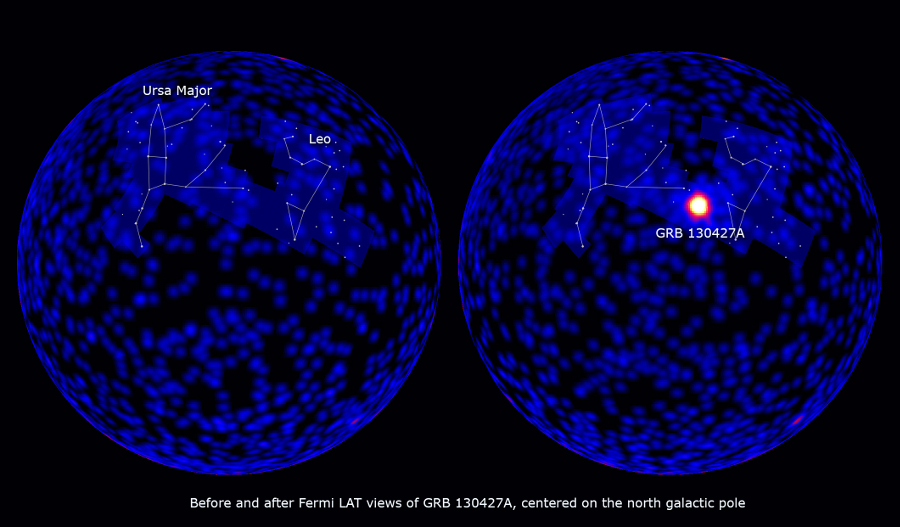
 Credit: NASA/DOE/Fermi LAT Collaboration
Credit: NASA/DOE/Fermi LAT Collaboration
The Wow Burst
Just after 3:47 a.m. EDT on Saturday, April 27, the Gamma-ray Burst Monitor on the Fermi Gamma-ray Space Telescope detected the brightest Gamma-ray burst ever seen. The burst produced radiation at energies up to 94 giga-electron volts, about three times higher than the previous record. It also set the record as the longest GRB ever; the GeV emission from the burst lasted for hours, and it remained detectable by the LAT for the better part of a day. An accurate position by the Swift space observatory allowed detection of the burst by ground-based optical, infrared and radio telescopes, making this one of the best-studied GRBs. This GRB was probably produced by the catastrophic death of a massive star that suddenly ran out of nuclear fuel. When this happens, the core of the star collapses into a black hole. Models suggest that as the black hole at the center of the star accretes matter from the star, a powerful jet forms on either side of the black hole. These jets then rip through the star, blowing it apart. GRB 130427A was so bright because it was one of the nearest bursts ever seen, and astronomers are continuing observations, hoping to find the optical supernova associated with the Gamma-ray burst.
Published: May 6, 2013
<
HEA Dictionary ● Archive
● Search HEAPOW
● Other Languages
● HEAPOW on Facebook
● Download all Images
● Education ● HEAD
>

Each week the HEASARC
brings you new, exciting and beautiful images from X-ray and Gamma ray
astronomy. Check back each week and be sure to check out the HEAPOW archive!
Page Author: Dr. Michael F. Corcoran
Last modified Tuesday, 27-Feb-2024 10:15:15 EST


